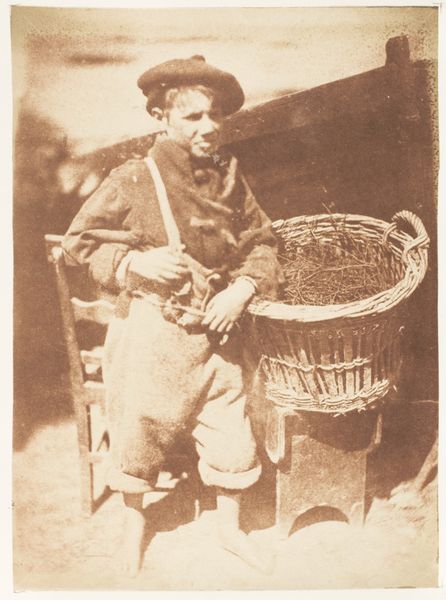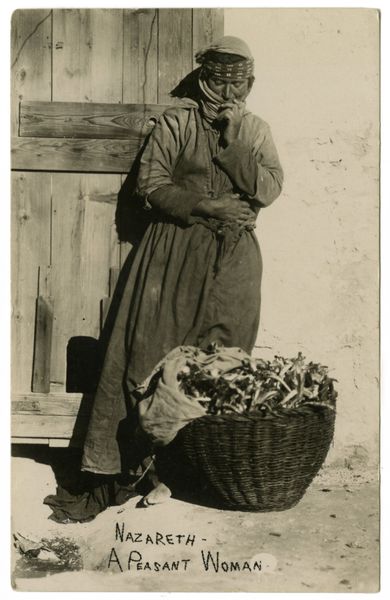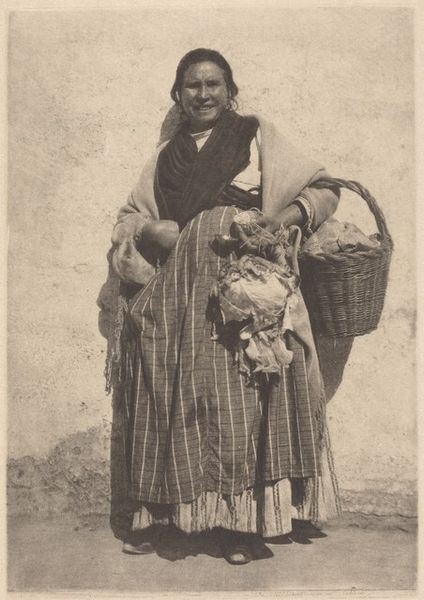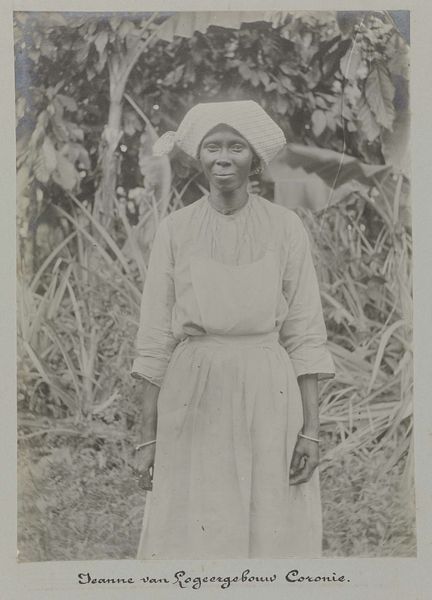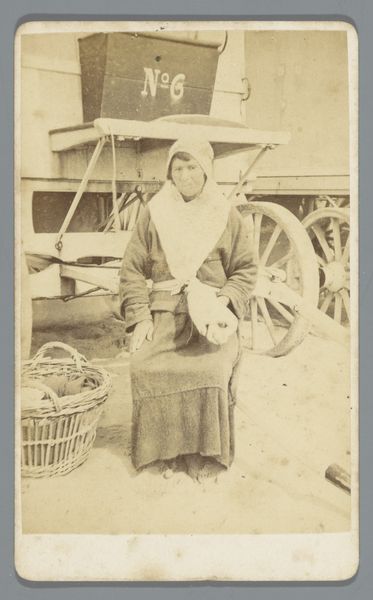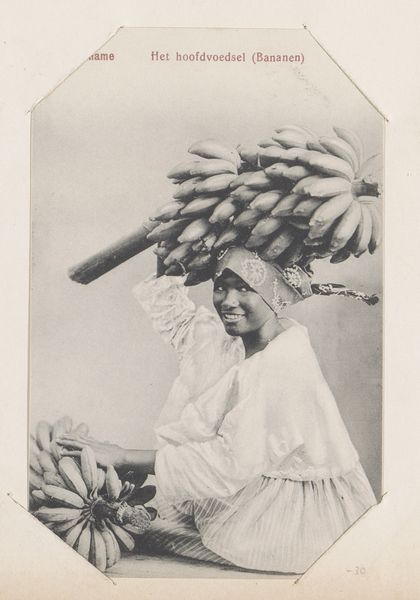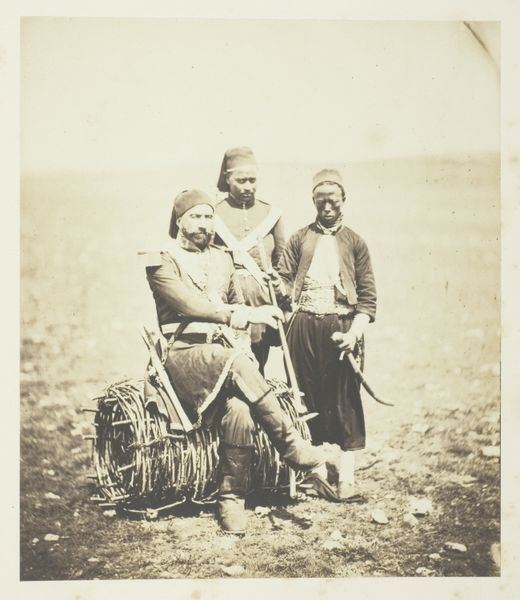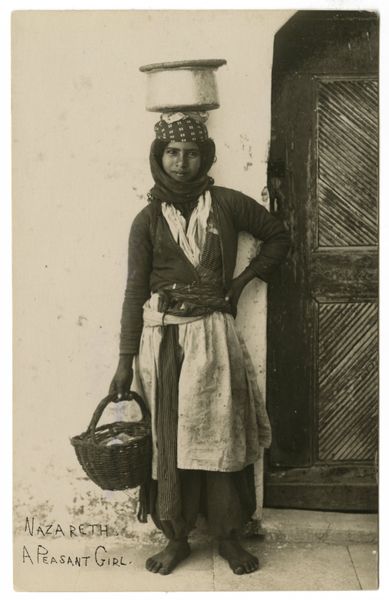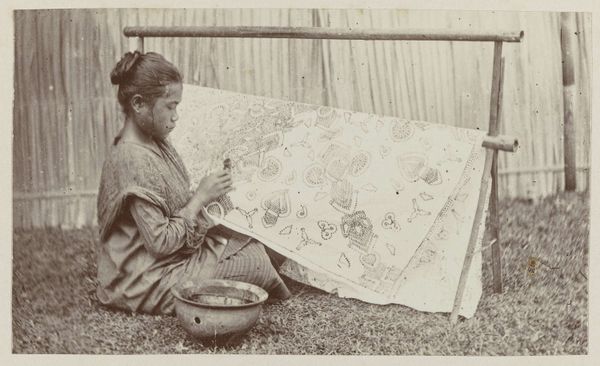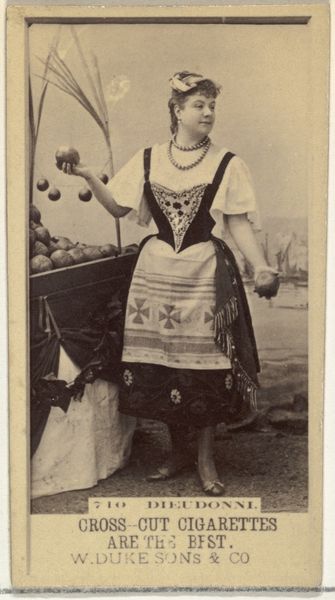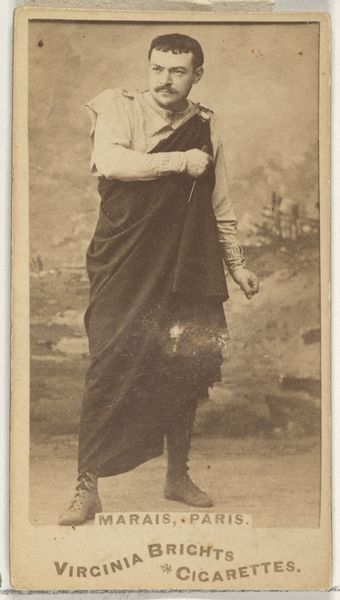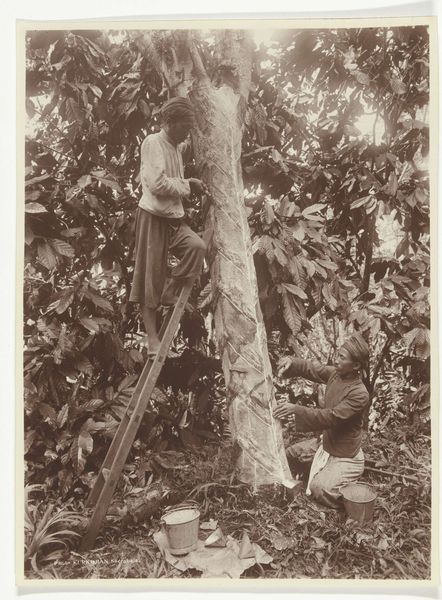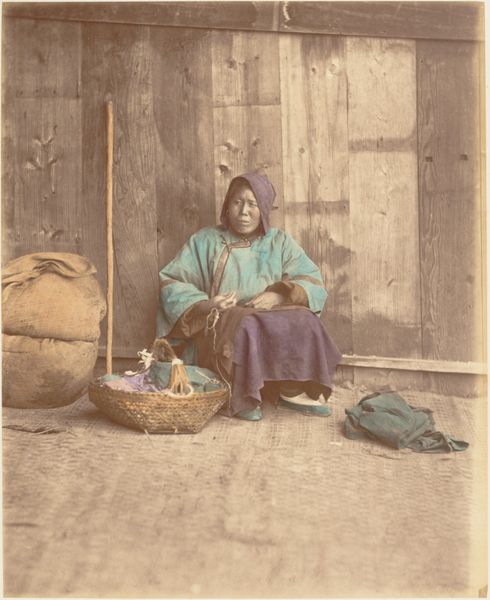
photography
#
portrait
#
asian-art
#
figuration
#
photography
#
historical photography
#
portrait reference
#
realism
Dimensions: height 238 mm, width 175 mm
Copyright: Rijks Museum: Open Domain
Editor: Here we have a photograph from 1912 by Onnes Kurkdjian, titled "Vrouw met graanaren in de hand in Nederlands-Indië," or "Woman with ears of grain in hand in the Dutch East Indies." It feels incredibly staged, and the composition seems almost...unbalanced. What do you see in this piece from a formal perspective? Curator: Indeed. Let's examine the tonal relationships. Observe the stark contrast between the woman's garb and the diffuse background. Note the texture of the woven matting beneath her feet, contrasted with the smooth planes of her face. The ears of grain form a fascinating counterpoint, a cluster of near-identical lines held in check. Does this intentional disruption of planes alter how you view the subject's presence? Editor: I suppose it does. The way the light catches those grains almost distracts from the woman herself. The texture is so different, and the light focuses the eye on it, disrupting the portrait aspect. Curator: Precisely. Kurkdjian seems to be deliberately exploring visual disruptions within the frame. Is he making a visual statement, an almost philosophical one, about foreground versus background, form versus content? Consider how the near and far planes interact and almost war with one another. It transcends simple portraiture and touches on something more complex. Editor: It's almost like a study in contrasts, a dialogue between textures and light. I hadn’t really considered that, I was just caught up in the documentary feel and initial impact. Curator: The “documentary feel,” as you say, belies this artist's eye for pictorial relationships. The photograph achieves more when its structure and forms are assessed alongside its depicted content. I daresay, one is not divorced from the other; form gives content new dimension. Editor: That's a good reminder to look beyond the surface of any art and consider how the elements themselves shape meaning! Thank you!
Comments
No comments
Be the first to comment and join the conversation on the ultimate creative platform.
